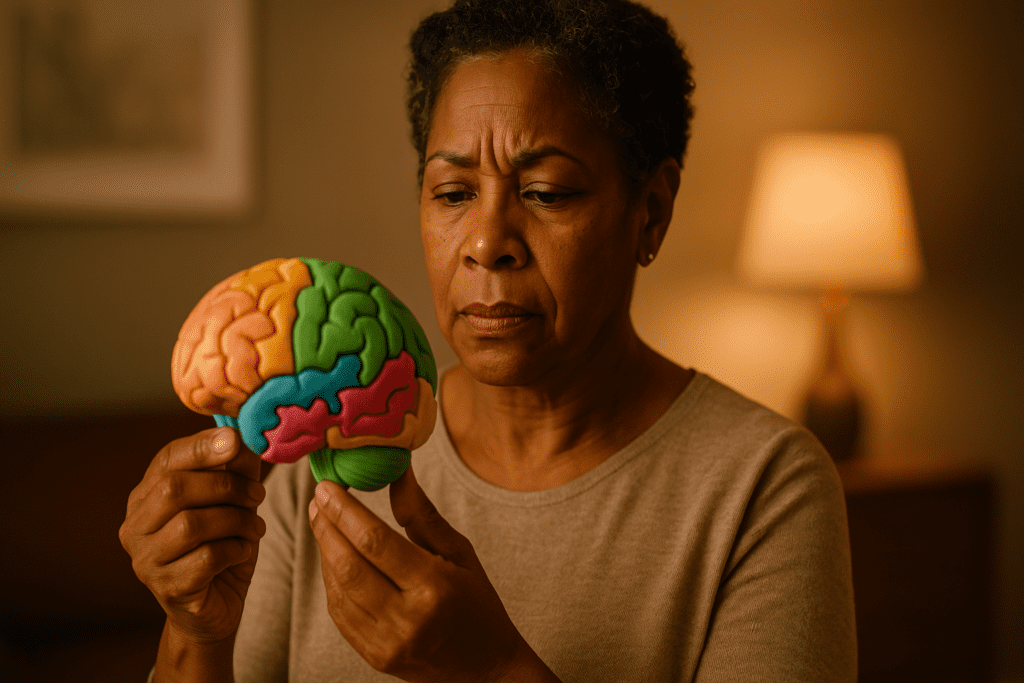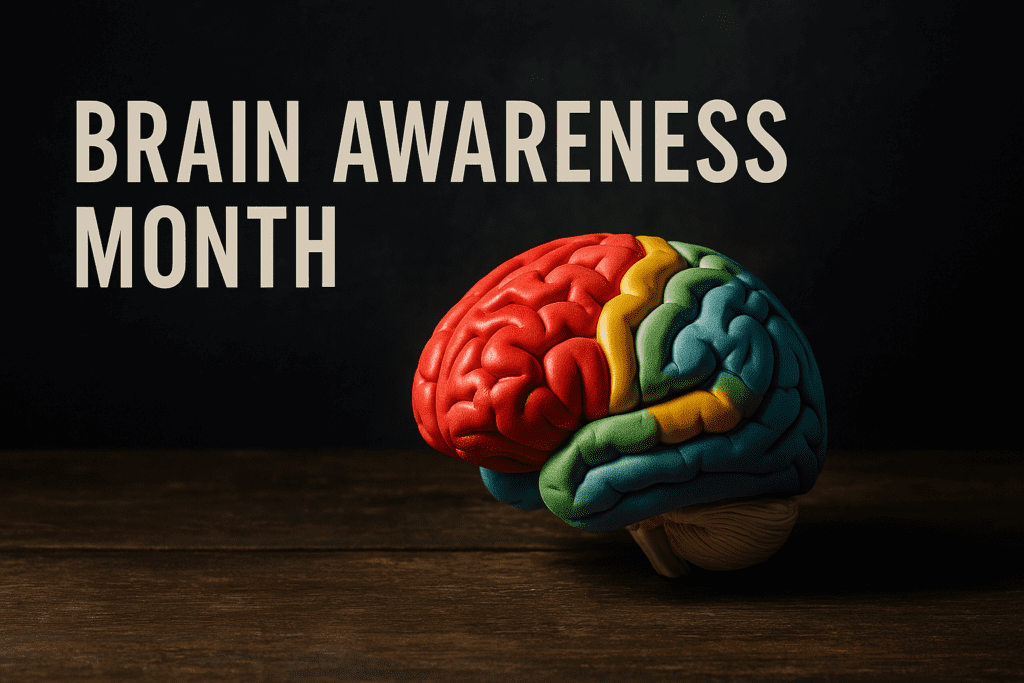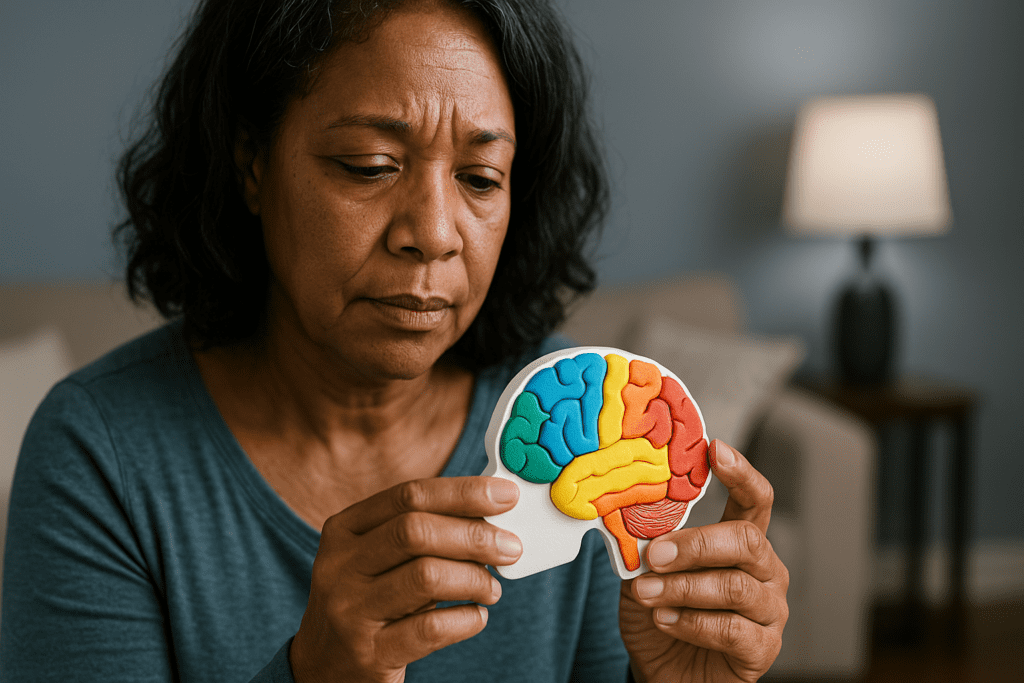Each March, the scientific and medical communities come together to observe Brain Awareness Month, a global campaign designed to elevate public understanding of the brain and promote the importance of neurological health. While the brain remains a complex and awe-inspiring organ, the efforts of Brain Awareness Month are not solely academic. They touch deeply personal and pressing issues that affect millions—chief among them, the growing concern of Alzheimer’s disease. As society continues to grapple with rising dementia rates, campaigns like Brain Awareness Month offer a critical opportunity to spotlight this devastating condition and enhance public education around mental health and cognitive well-being. In doing so, they become a beacon of advocacy, awareness, and, most importantly, hope.
You may also like: How to Prevent Dementia and Alzheimer’s Disease Naturally: Expert-Backed Strategies to Reduce Your Risk Through Lifestyle and Diet
Understanding the Mission of Brain Awareness Month
Brain Awareness Month is more than a calendar observance; it is a multi-faceted initiative aimed at bridging the gap between neuroscience and the public. Coordinated globally by organizations such as the Dana Foundation, this annual campaign seeks to illuminate how the brain works, the diseases that affect it, and the importance of brain research. Events during Brain Awareness Month range from public lectures and school programs to community outreach events and media campaigns, all designed to make brain science accessible and engaging.
Importantly, this educational effort places equal emphasis on the prevention and management of neurological diseases as it does on curiosity-driven learning. The inclusion of Alzheimer’s disease within these dialogues is both timely and essential. As the aging population expands, the incidence of neurodegenerative diseases like Alzheimer’s has climbed steadily, making it a focal point during Brain Awareness Month. By using this platform to disseminate accurate information, combat stigma, and encourage early intervention, Brain Awareness Month plays a pivotal role in transforming passive awareness into proactive action.
The Growing Relevance of Alzheimer’s Disease Awareness Month
While Brain Awareness Month takes center stage in March, Alzheimer’s Awareness Month—observed in November—offers another strategic moment for public engagement. However, the synergy between the two campaigns cannot be overstated. In fact, many advocacy groups use Brain Awareness Month as a springboard to initiate year-long discussions about Alzheimer’s disease. These two observances, though distinct, reinforce each other’s goals by promoting sustained visibility for a condition that is often misunderstood or minimized.
Alzheimer’s Awareness Month focuses specifically on educating the public about Alzheimer’s disease, a progressive neurodegenerative disorder characterized by memory loss, cognitive decline, and behavioral changes. It underscores the urgent need for research funding, caregiver support, and early diagnosis. When these messages are echoed during Brain Awareness Month, the result is a more comprehensive and continuous public education campaign. This dual visibility serves to normalize conversations around dementia and help dismantle the stigma that still surrounds cognitive impairment in later life.
Why Early Education About Alzheimer’s Disease Matters
One of the most critical benefits of public campaigns like Brain Awareness Month and Alzheimer’s Disease Awareness Month is their capacity to deliver early, accessible education. Alzheimer’s disease does not emerge overnight. It often begins with subtle cognitive changes that are either ignored or misattributed to normal aging. Public education can help individuals and families recognize early warning signs, seek medical evaluation, and explore potential interventions at a stage when such efforts are most beneficial.
Moreover, early education fosters long-term planning, both personally and socially. Families equipped with knowledge about Alzheimer’s can make informed decisions about caregiving, legal and financial matters, and treatment strategies. On a broader scale, a more educated public is better positioned to advocate for policy changes, support research initiatives, and reduce systemic barriers to care. The intersection of Brain Awareness Month and Alzheimer’s Disease Awareness Month provides a strategic entry point for this vital educational push, leveraging media attention and institutional support to raise the collective neurological literacy of society.
Demystifying the Disease Through Science Communication
For many, Alzheimer’s remains a source of fear, confusion, and even shame. This is partly due to its complex pathology, which can seem inaccessible without a background in neuroscience. However, one of the most effective outcomes of Brain Awareness Month has been its role in demystifying these concepts through targeted science communication. By translating complex research into relatable language, public health experts can empower communities to understand Alzheimer’s in both medical and human terms.
Scientific literacy is essential for navigating a condition like Alzheimer’s. Understanding that the disease is linked to amyloid plaques, tau protein tangles, and synaptic dysfunction helps deconstruct myths that Alzheimer’s is an inevitable part of aging or the result of lifestyle choices alone. With clear and consistent messaging, campaigns can shift the narrative from fatalism to empowerment. As research into biomarkers, genetic risk factors, and therapeutic interventions advances, public education remains a key conduit through which this knowledge is disseminated.
Supporting Caregivers Through Awareness and Advocacy
Alzheimer’s disease does not affect individuals in isolation. It deeply impacts caregivers—often family members—who are tasked with providing emotional, physical, and logistical support. Brain Awareness Month, especially when aligned with Alzheimer’s Disease Awareness Month, provides an invaluable opportunity to spotlight the experiences and needs of these caregivers. Educational campaigns often include resources tailored to caregiver wellness, such as coping strategies, support group information, and tools for managing stress and burnout.
Additionally, public advocacy generated during these awareness months can influence policy changes that benefit caregivers. For instance, increased visibility of caregiver challenges has prompted legislative discussions around paid family leave, respite care programs, and funding for in-home support services. By elevating the caregiver narrative, awareness campaigns help ensure that the burden of Alzheimer’s disease is more equitably distributed and better supported.
Reducing Stigma and Shaping Public Attitudes
Stigma remains one of the most persistent barriers to early diagnosis and compassionate care in Alzheimer’s disease. Many individuals delay seeking medical help due to fear of judgment or social isolation. Brain Awareness Month, when strategically aligned with Alzheimer’s Awareness Month, plays a significant role in reshaping public attitudes. Through storytelling, public testimonials, and media engagement, these campaigns humanize the Alzheimer’s experience and encourage empathy.
By normalizing cognitive decline as a medical condition rather than a moral failing, awareness efforts can shift societal norms and expectations. Public education fosters a culture of inclusion, where individuals with Alzheimer’s are treated with dignity and respect. It also encourages community-level adaptations—such as dementia-friendly environments, workplace accommodations, and accessible transportation—that make everyday life more manageable for those affected. These cultural shifts are vital for long-term mental health and cognitive well-being.

The Role of Schools and Universities in Promoting Brain Health
Academic institutions are increasingly participating in Brain Awareness Month by hosting seminars, engaging students in neuroscience education, and encouraging intergenerational dialogue about brain health. These efforts are particularly impactful in fostering a lifetime commitment to neurological wellness. Introducing young adults to the science of Alzheimer’s disease not only prepares future healthcare professionals but also instills empathy and understanding among peers who may one day become caregivers or policy advocates.
Colleges and universities are uniquely positioned to bridge research and community impact. Student-led initiatives, interdisciplinary panels, and service-learning projects provide rich opportunities to explore the intersections of science, ethics, public policy, and healthcare. By participating in Brain Awareness Month, academic communities contribute to a broader cultural shift that places cognitive health at the forefront of public discourse, ensuring that the message of Alzheimer’s Awareness Month reverberates beyond traditional audiences.
Leveraging Digital Media to Expand Reach and Engagement
In an increasingly digital world, the use of online platforms has become indispensable for raising awareness about Alzheimer’s disease. Social media campaigns, webinars, podcasts, and interactive educational tools allow organizations to reach diverse audiences with tailored content. During Brain Awareness Month, digital media serves as a powerful amplifier for Alzheimer’s-related messages, helping to engage younger demographics who may not yet consider themselves affected by the disease.
Digital storytelling, in particular, has emerged as a compelling format for sharing lived experiences. Video testimonials from patients, caregivers, and clinicians can foster emotional connections that static information often fails to achieve. Online forums and virtual support groups also provide safe spaces for education and dialogue, extending the reach of Alzheimer’s Disease Awareness Month to those who may lack access to traditional healthcare or community services. When utilized thoughtfully, digital media enhances both the breadth and depth of public engagement.
Public Health Policy and the Impact of Awareness Campaigns
Public education efforts like Brain Awareness Month and Alzheimer’s Awareness Month have measurable impacts on health policy. Increased awareness often translates into increased political will, driving the allocation of funding for research, caregiver support, and community programs. For example, the National Alzheimer’s Project Act (NAPA), signed into law in 2011, was the result of sustained advocacy rooted in widespread public awareness.
Such policies not only fund scientific research but also create frameworks for national strategies on Alzheimer’s care. Awareness campaigns provide the momentum necessary to keep these initiatives visible and accountable. They also encourage local governments and healthcare systems to implement community-level programs, such as memory screening clinics, caregiver training, and dementia-friendly community certifications. In this way, awareness is not merely symbolic; it is a catalyst for systemic change.
Integrating Cultural Competency into Alzheimer’s Education
As Alzheimer’s disease affects individuals across all backgrounds, it is essential that public education campaigns reflect the cultural, linguistic, and socioeconomic diversity of the populations they serve. Brain Awareness Month presents an opportunity to tailor educational initiatives in ways that resonate with specific communities. Culturally competent messaging helps ensure that vital information about Alzheimer’s prevention, symptoms, and treatment is both accessible and relevant.
For example, communities with historical mistrust of the medical system may benefit from partnerships with faith-based organizations or community elders. Educational materials offered in multiple languages and formats—such as audio, visual, and print—can increase understanding among diverse demographic groups. Cultural awareness also extends to recognizing how caregiving roles differ across societies, and incorporating those insights into support services. By embracing cultural competency, Alzheimer’s Disease Awareness Month and Brain Awareness Month can create more inclusive and effective public health strategies.
Looking Ahead: The Future of Awareness Campaigns
As science advances and public health challenges evolve, awareness campaigns must also adapt. The future of Brain Awareness Month lies in its ability to integrate emerging research on prevention, precision medicine, and technological innovation. For Alzheimer’s disease in particular, new findings around modifiable risk factors—such as sleep, diet, and cardiovascular health—must be incorporated into public education efforts.
Artificial intelligence, wearable technology, and digital diagnostics are reshaping the landscape of Alzheimer’s care and detection. Public campaigns have a vital role in educating communities about the benefits and limitations of these tools, ensuring that technological progress does not outpace ethical and practical considerations. Moreover, the rise of citizen science and patient advocacy offers new avenues for public participation in research. By fostering an ongoing dialogue between scientists and the public, awareness months can remain dynamic and responsive.
Fostering Cognitive Well-Being Through Lifelong Engagement
Ultimately, the value of Brain Awareness Month and Alzheimer’s Awareness Month lies in their shared goal: to promote mental health and cognitive well-being across the lifespan. These campaigns remind us that brain health is not a concern reserved for the elderly or the ill—it is a lifelong journey influenced by education, environment, genetics, and community support. By encouraging proactive engagement with brain science, these observances help build a culture that values cognitive vitality as much as physical health.
This approach requires sustained commitment, not just from healthcare providers and researchers, but from educators, employers, families, and policymakers. The ripple effect of public education can transform how societies understand and address cognitive decline, shifting the focus from crisis response to early intervention and prevention. As such, Brain Awareness Month and Alzheimer’s Disease Awareness Month serve as vital touchstones in the collective endeavor to support cognitive resilience.

Frequently Asked Questions: Brain Awareness Month and Alzheimer’s Disease Education
1. How can Brain Awareness Month help reshape public attitudes toward Alzheimer’s disease?
Brain Awareness Month plays a pivotal role in reshaping public attitudes by reframing Alzheimer’s as a neurological disease that deserves empathy, not stigma. When the campaign highlights the scientific complexity and personal toll of cognitive decline, it encourages compassion rather than fear. Additionally, initiatives during Brain Awareness Month humanize the diagnosis through storytelling, emphasizing resilience and adaptability over despair. By giving Alzheimer’s patients and their caregivers a voice, this month creates space for community support, increased dialogue, and social inclusion. In turn, these narratives help break down harmful stereotypes and inspire proactive engagement with cognitive health.
2. Why is it important to extend Alzheimer’s education beyond Alzheimer’s Awareness Month?
While Alzheimer’s Awareness Month provides concentrated attention in November, the need for consistent education extends well beyond a single month. Cognitive decline doesn’t follow a calendar, and year-round reinforcement is essential to ensure that early signs are recognized and addressed. By integrating Alzheimer’s education into broader campaigns like Brain Awareness Month, the message reaches a more diverse and multigenerational audience. Continuous engagement ensures that emerging research findings, caregiving strategies, and community resources remain top-of-mind. Most importantly, sustained awareness empowers individuals and families to build long-term strategies for brain health and dementia prevention.
3. What are some innovative ways communities can support Alzheimer’s education during Brain Awareness Month?
Communities can adopt innovative approaches to Alzheimer’s education by incorporating intergenerational programs, local art installations, and memory cafes into Brain Awareness Month events. For instance, creating public murals inspired by those living with dementia can foster inclusivity and dialogue. Libraries and community centers can offer storytelling sessions where caregivers and patients share lived experiences, deepening collective empathy. Schools may host neuroscience fairs that explore the biological underpinnings of Alzheimer’s, reaching younger generations early. These creative outlets amplify the reach of Alzheimer’s Disease Awareness Month and help transform education into lived, communal experience.
4. How does the overlap of Brain Awareness Month and Alzheimer’s messaging benefit healthcare professionals?
The alignment of Brain Awareness Month with Alzheimer’s advocacy enables healthcare professionals to deliver a unified, evidence-based message that resonates across disciplines. Neurologists, psychologists, and geriatricians can leverage the platform to update the public on diagnostic advancements and care innovations. This visibility also supports continuing education for providers who may not specialize in neurology but encounter cognitive decline in their patient populations. For example, primary care physicians gain tools to conduct early screenings and make more informed referrals. In essence, integrating themes from Alzheimer’s Disease Awareness Month into the broader campaign encourages interdisciplinary collaboration and strengthens healthcare delivery systems.
5. What role does cultural sensitivity play in Alzheimer’s education during Brain Awareness Month?
Cultural sensitivity is essential when addressing Alzheimer’s during Brain Awareness Month, as beliefs about aging, memory loss, and mental illness vary widely across communities. In some cultures, cognitive decline may be considered a normal part of aging or even spiritual in nature, complicating efforts to seek early care. Tailoring Alzheimer’s messaging to reflect cultural values, language preferences, and caregiving customs helps bridge the trust gap. Partnerships with local leaders and culturally aligned organizations during both Brain Awareness Month and Alzheimer’s Awareness Month can significantly improve outreach effectiveness. By honoring cultural perspectives, education becomes more inclusive, equitable, and actionable.
6. Are there psychological benefits to involving youth in Alzheimer’s awareness campaigns?
Involving young people in Alzheimer’s awareness initiatives during Brain Awareness Month fosters psychological growth, emotional intelligence, and intergenerational empathy. Students who volunteer in memory care facilities or conduct school projects on brain health often report a deeper understanding of aging and a stronger sense of social responsibility. These engagements also combat ageist attitudes by highlighting the wisdom and humanity of older adults living with cognitive impairments. Moreover, integrating Alzheimer’s Disease Awareness Month into youth-focused activities encourages early brain health habits that can reduce dementia risk later in life. When youth are educated and empowered, they become vital allies in spreading awareness and compassion.
7. How can technology improve the effectiveness of Alzheimer’s messaging during Brain Awareness Month?
Technology offers vast potential to elevate Alzheimer’s education during Brain Awareness Month through digital storytelling, interactive learning platforms, and telehealth engagement. For instance, augmented reality tools can simulate cognitive impairment, offering a visceral sense of what it feels like to live with Alzheimer’s. Mobile apps that track memory function or offer brain training exercises can be promoted during awareness months to encourage self-monitoring. Online support groups provide continuous, accessible peer interaction for caregivers and patients alike. When Alzheimer’s Awareness Month messaging is integrated with tech-savvy approaches, campaigns can reach broader, more diverse audiences and create lasting behavioral change.
8. What policy changes can be supported through the visibility created by Alzheimer’s and Brain Awareness Months?
The heightened visibility of Alzheimer’s Disease Awareness Month and Brain Awareness Month can be harnessed to advocate for stronger public policies that protect patients and caregivers. For instance, legislation promoting dementia-friendly cities, tax credits for family caregivers, or expanded Medicare coverage for neurological diagnostics often gains traction when public attention is high. These observances also bolster support for research funding through federal programs like the National Institute on Aging. Local governments may use the momentum to initiate public health campaigns or develop memory clinics in underserved regions. In this way, awareness months can catalyze policy changes that translate education into systemic impact.
9. How can professionals outside of healthcare contribute meaningfully to Alzheimer’s awareness?
Professionals in fields such as education, finance, and urban planning can contribute to Alzheimer’s awareness by integrating brain-friendly practices into their work. Educators can adapt curriculum during Brain Awareness Month to include discussions on cognitive resilience, while financial advisors may offer planning services for families anticipating future care needs. Urban designers and architects can advocate for dementia-friendly community layouts, including wayfinding systems and sensory-safe environments. Participation in Alzheimer’s Awareness Month doesn’t require medical expertise—it requires a commitment to accessibility and dignity across sectors. Cross-industry collaboration ensures that the principles of Alzheimer’s education reach all corners of society.
10. What does the future of Alzheimer’s public education look like beyond awareness months?
The future of Alzheimer’s public education will likely focus on personalization, precision medicine, and community integration, transcending the temporal boundaries of Alzheimer’s Disease Awareness Month and Brain Awareness Month. With advances in genomics and AI, individuals will increasingly receive tailored recommendations for cognitive health management. Simultaneously, public education will emphasize lifestyle medicine, social connectivity, and lifelong learning as pillars of prevention. Schools, workplaces, and digital platforms will collaborate more closely to ensure continuous brain health engagement. Ultimately, awareness months will serve as annual benchmarks rather than the sole vehicles for information, supporting a more integrated and proactive societal approach to Alzheimer’s education.

Conclusion: Why Brain Awareness Month Is Essential for Alzheimer’s Education and Mental Health Advocacy
As we reflect on the interconnectedness of Brain Awareness Month and Alzheimer’s Disease Awareness Month, it becomes clear that these observances are not merely symbolic—they are essential drivers of change in how we understand, prevent, and respond to neurodegenerative conditions. By elevating public understanding of the brain, these campaigns foster environments that are not only informed but also compassionate, inclusive, and proactive.
In an era where Alzheimer’s disease poses increasing public health challenges, the role of sustained public education cannot be overstated. Through strategic messaging, community engagement, and evidence-based resources, awareness months offer a platform for bridging science and society. They demystify complex conditions, reduce stigma, support caregivers, and influence policy. Just as importantly, they invite all individuals—regardless of age or background—to participate in safeguarding their cognitive future.
In this light, Brain Awareness Month becomes more than a scientific celebration. It becomes a vital instrument for mental health advocacy and Alzheimer’s education, ensuring that awareness evolves into action, and action into lasting societal impact.
brain health awareness, cognitive health campaigns, dementia education programs, early signs of memory loss, neurological wellness, brain science communication, caregiver support resources, mental health advocacy, public health education, aging and brain function, neuroscience for the public, memory care initiatives, understanding dementia risk, healthy aging strategies, brain disease prevention, community brain health, neurodegenerative disorder education, memory loss in aging adults, promoting brain research, inclusive brain health outreach
Further Reading:
Alzheimer’s & Brain Awareness Month – June 2023 | Facts & Importance
Raising awareness for dementia risk reduction through a public health campaign: a pre-post study
June is Alzheimer’s and Brain Awareness Month
Disclaimer
The information contained in this article is provided for general informational purposes only and is not intended to serve as medical, legal, or professional advice. While Health11News strives to present accurate, up-to-date, and reliable content, no warranty or guarantee, expressed or implied, is made regarding the completeness, accuracy, or adequacy of the information provided. Readers are strongly advised to seek the guidance of a qualified healthcare provider or other relevant professionals before acting on any information contained in this article. Health11News, its authors, editors, and contributors expressly disclaim any liability for any damages, losses, or consequences arising directly or indirectly from the use, interpretation, or reliance on any information presented herein. The views and opinions expressed in this article are those of the author(s) and do not necessarily reflect the official policies or positions of Health11News.


